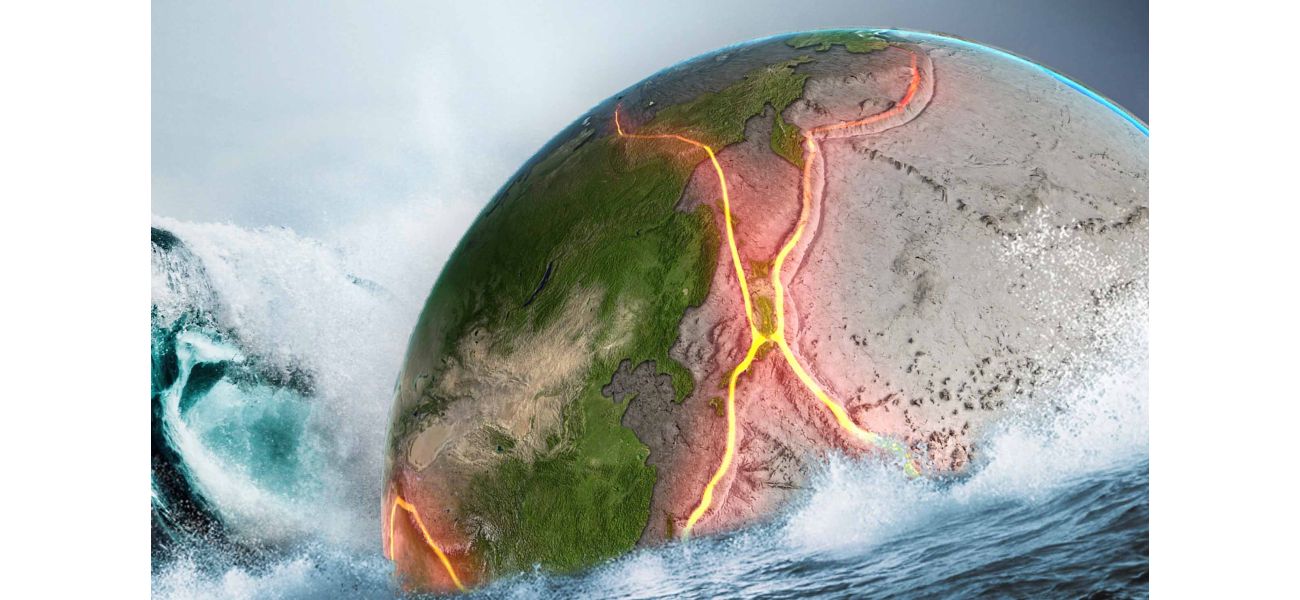New ocean and continent to form on Earth sooner than expected
Expect natural disasters such as earthquakes and volcanic eruptions.
January 31st 2025.

Even though it may seem like the world around us is constantly changing, there are some changes that are happening at a much slower pace, over hundreds of millions of years. One of these changes is the movement of the earth's tectonic plates. These massive pieces of the earth's crust and upper mantle are constantly shifting and colliding, causing earthquakes and volcanic activity. And as they move, they are also shaping the very land we live on.
It's hard to imagine, but about 250 million years ago, the continents we know today were all connected as one supercontinent called Pangaea. But over time, this landmass began to break apart and spread out, forming the continents we know today. However, this process is far from over. The continents we see today will not stay in their current positions forever.
In fact, there is evidence that one of the continents, Africa, is being torn in two at a much faster pace than originally predicted. Geologists have discovered a 35-mile-long fissure in Ethiopia's desert that has been widening at a rate of 6-7mm per year. This fissure is linked to a 2000-mile-long rift called the East Africa Rift System, which is caused by the movement of tectonic plates.
This rift, which is located in eastern Africa and spans across multiple countries, has been slowly growing for millions of years. But recent studies have shown that it may be widening at a much faster rate than previously thought. Researchers believe that in the future, this rift could potentially lead to the formation of a new continent, called the Nubian continent, separated from the rest of Africa by a new ocean.
But what exactly does this mean for Africa and the rest of the world? Well, for starters, it's hard to predict exactly what the world will look like in a million years. But scientists have already identified one place where a new continent is likely to form. And while it may seem like a distant event, it's important to note that this process could happen in as little as one to five million years.
The geological society of London has stated that as the rift continues to widen, the rift valley will eventually sink lower and lower, allowing ocean waters to flood in. This could lead to the formation of a new narrow ocean basin between the Nubian and Somalian plates. And while this may seem like a slow process, it's important to remember that it's all happening deep beneath our feet.
But why is this happening? Well, there are a few theories. Some scientists believe that it's due to the ejection of super-hot rock from the earth's core, which is constantly moving and pushing the plates apart. Others believe that it's due to the lithosphere, a layer of the earth's mantle that is "floating" on top of a weaker layer, similar to an iceberg in the ocean. And in the case of Africa, the African Superplume, a swollen slab of mantle beneath southwest Africa, may be pushing the plates apart.
While all of this may seem like a distant event, the effects are already being felt in some parts of Africa. In 2005, a 35-mile-long fissure opened up in Ethiopia, and just a few years later, another one appeared in Kenya. These events serve as a reminder that the earth is constantly changing and evolving, and we are just along for the ride.
So while we may not see the formation of a new continent in our lifetimes, it's important to remember that the world around us is constantly in motion, and the very land we stand on is a result of these slow, but powerful geological forces. Who knows what the world will look like in a million years, but one thing is for sure, the earth will continue to shape and reshape itself for millions of years to come.
It's hard to imagine, but about 250 million years ago, the continents we know today were all connected as one supercontinent called Pangaea. But over time, this landmass began to break apart and spread out, forming the continents we know today. However, this process is far from over. The continents we see today will not stay in their current positions forever.
In fact, there is evidence that one of the continents, Africa, is being torn in two at a much faster pace than originally predicted. Geologists have discovered a 35-mile-long fissure in Ethiopia's desert that has been widening at a rate of 6-7mm per year. This fissure is linked to a 2000-mile-long rift called the East Africa Rift System, which is caused by the movement of tectonic plates.
This rift, which is located in eastern Africa and spans across multiple countries, has been slowly growing for millions of years. But recent studies have shown that it may be widening at a much faster rate than previously thought. Researchers believe that in the future, this rift could potentially lead to the formation of a new continent, called the Nubian continent, separated from the rest of Africa by a new ocean.
But what exactly does this mean for Africa and the rest of the world? Well, for starters, it's hard to predict exactly what the world will look like in a million years. But scientists have already identified one place where a new continent is likely to form. And while it may seem like a distant event, it's important to note that this process could happen in as little as one to five million years.
The geological society of London has stated that as the rift continues to widen, the rift valley will eventually sink lower and lower, allowing ocean waters to flood in. This could lead to the formation of a new narrow ocean basin between the Nubian and Somalian plates. And while this may seem like a slow process, it's important to remember that it's all happening deep beneath our feet.
But why is this happening? Well, there are a few theories. Some scientists believe that it's due to the ejection of super-hot rock from the earth's core, which is constantly moving and pushing the plates apart. Others believe that it's due to the lithosphere, a layer of the earth's mantle that is "floating" on top of a weaker layer, similar to an iceberg in the ocean. And in the case of Africa, the African Superplume, a swollen slab of mantle beneath southwest Africa, may be pushing the plates apart.
While all of this may seem like a distant event, the effects are already being felt in some parts of Africa. In 2005, a 35-mile-long fissure opened up in Ethiopia, and just a few years later, another one appeared in Kenya. These events serve as a reminder that the earth is constantly changing and evolving, and we are just along for the ride.
So while we may not see the formation of a new continent in our lifetimes, it's important to remember that the world around us is constantly in motion, and the very land we stand on is a result of these slow, but powerful geological forces. Who knows what the world will look like in a million years, but one thing is for sure, the earth will continue to shape and reshape itself for millions of years to come.
[This article has been trending online recently and has been generated with AI. Your feed is customized.]
[Generative AI is experimental.]
0
0
Submit Comment





